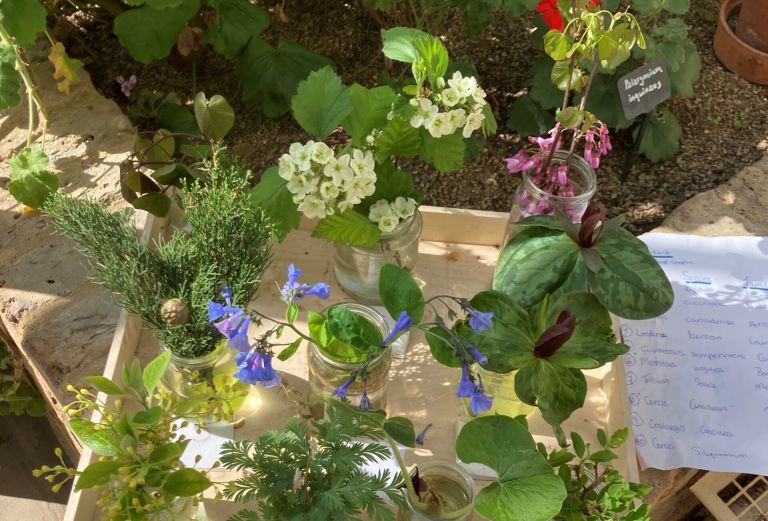
Written by garden apprentice Ellis.
Hello! My name’s Ellis, and I joined the team at Fulham Palace House and Gardens in mid-March as a full-time garden apprentice. It’s been an amazing first month and within this blog I’m going to reflect on some of my highlights in this journey so far.
One of the absolute highlights has been working alongside the amazing team of volunteers. Some are just starting out, and others have been sharing their time and knowledge here for over a decade. Hearing their stories and learning how the gardens have evolved through the years is something I look forward to every day.
Much of my time has been spent in the vegetable garden, which has been divided between myself, Jonathan (the HBGTP trainee), and Lewis (one of the gardeners). This year, I’ve been given responsibility for the brassica and leaf beds, as well as our first and second early potatoes. So far, we’ve planted all our potatoes, direct-sown leafy crops like chard, lettuce, and pak choi and started sowing and pricking out the brassicas. This part of the work feels especially familiar to me because of the time I spend on my own allotment.
One of the most fascinating experiences so far has been working with the Palace’s biodiversity and bee surveyor. We recently completed a biodiversity survey, learning more about the wildlife that calls the palace home. Understanding and supporting local biodiversity is a big part of our mission here, and it’s a great reminder of how our work in the gardens goes hand in hand with supporting the natural world.
There’s never a dull moment—whether it’s removing old box hedging, getting stuck into propagation or enjoying the company of the palace’s beloved chickens and even the resident cat.

As part of my level 2 horticultural apprenticeship, plant identification is a big focus. I’ve already completed three plant ID tests, which involve learning the botanical names—family, genus and species—of 10 selected plants from the gardens each week. I recently had the chance to curate my own ID test, and I themed it around a very special part of Fulham Palace’s history: the National Plant Collection of species once grown by Bishop Compton between 1675 and 1713.
Fulham Palace is committed to researching the full story to acknowledge all those involved with Compton’s plant collection including those from indigenous tribes and enslaved people.
Bishop Compton was a pioneering plant collector who introduced plant species from across the world to Fulham Palace, working with his missionaries who sent him plants from North America, Africa, India and the Caribbean. Though none of the original collection survives, the Cultivating Compton borders now bring many of those species back to the palace, celebrating its botanical heritage.
Some of the fascinating plants featured in the ID test included Sassafras albidum (sassafras), Dicentra cucullaria (bleeding heart), Asarum canadense (wild ginger), Mertensia virginica (Virginia bluebell) and Cercis siliquastrum (Judas tree). This living collection is a must-see—beautiful in any season and steeped in botanical significance.
All in all, it’s been an incredible start at Fulham Palace. I’ve learnt so much already, and I can’t wait to see what the next few months bring!